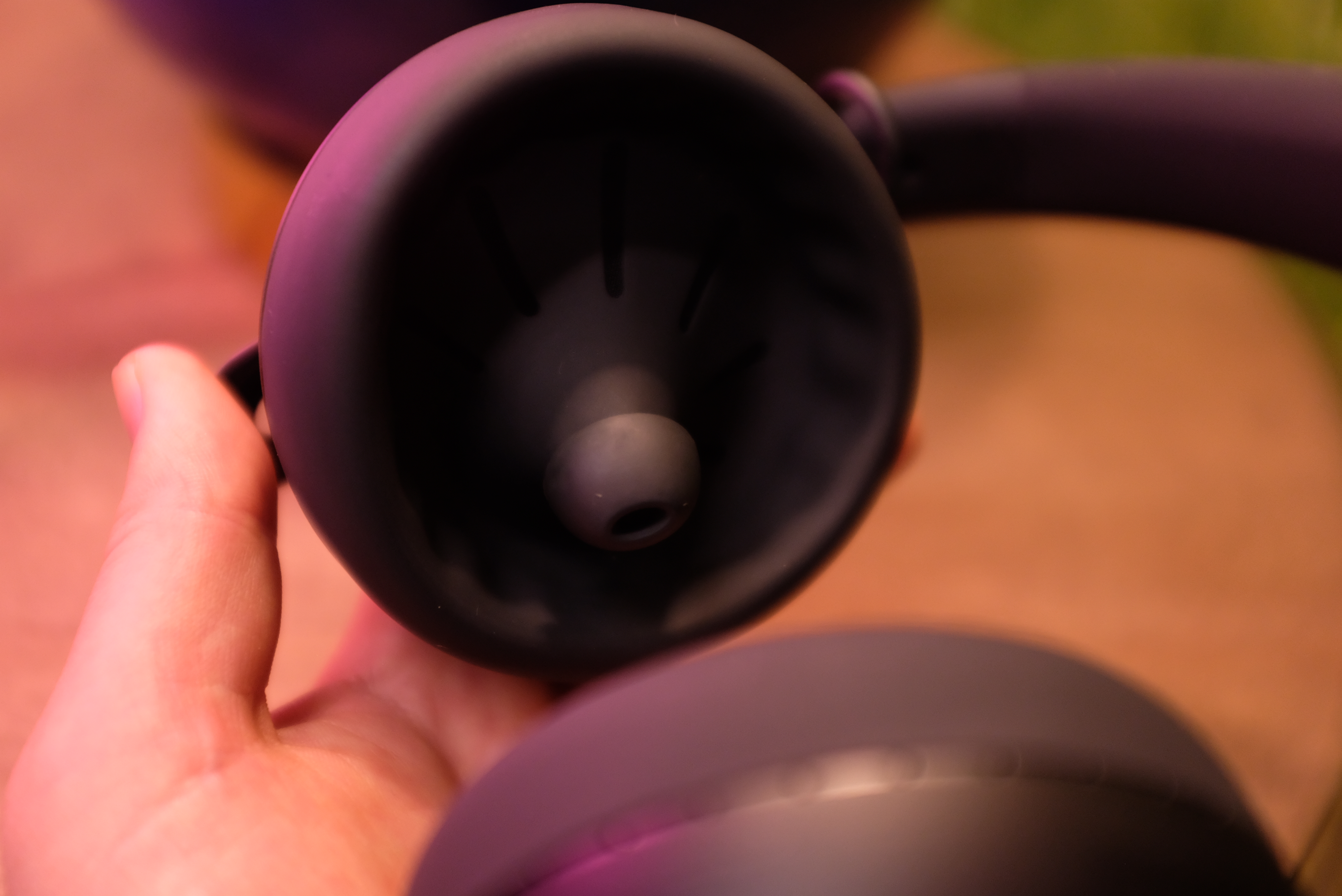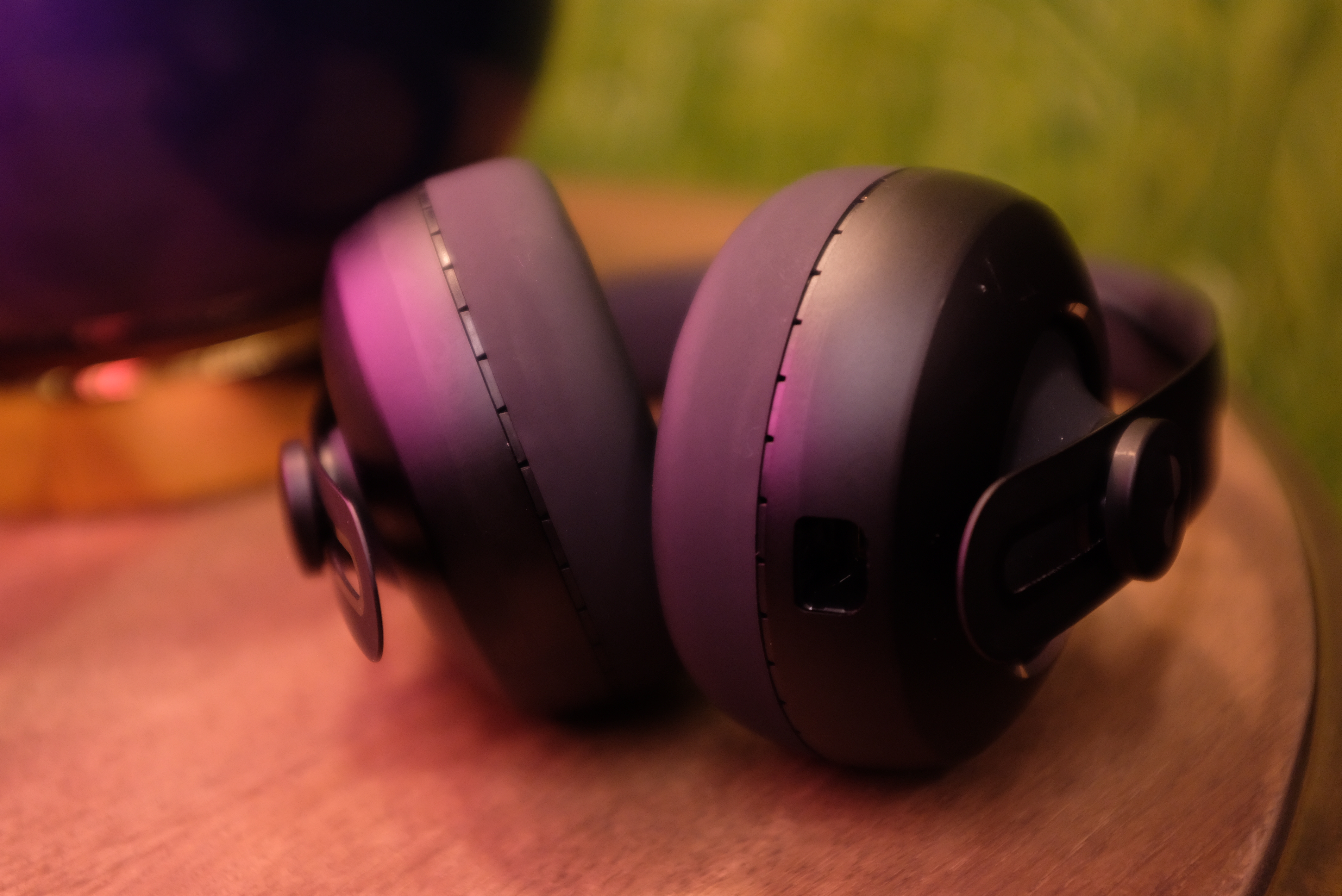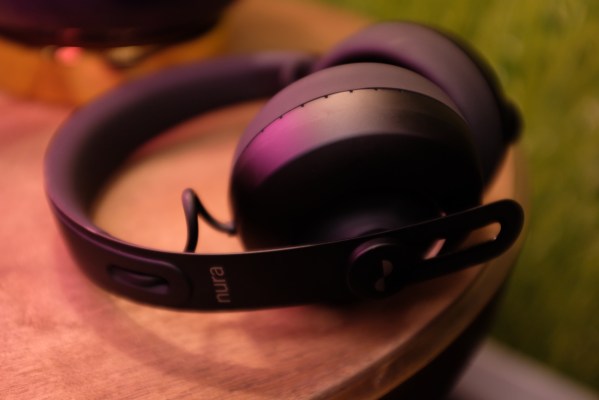I went to a cabin in the woods last week. After 14 years in the city, you need to get away from time to time — just shut everything off to keep the world from closing in on you.
I promised myself I wouldn’t read any work email (I failed), wouldn’t tweet (failed) and wouldn’t bring along any homework — I failed there too, but that one I don’t actually feel bad about. We’ve been following the progress of Nura headphones since they were an unsightly jumble of wires, with an exterior control box that did most of the heavy lifting.
The product’s customized sound profiles were a compelling idea executed well, but frankly, I had my doubts that the Australian startup would be able to connect all the dots required to get the product to market.
Of course, $4.6 million in seed funding and a $1.8 million Kickstarter go a long way when you’re building a pair of headphones. Early last month, the company popped by our San Francisco office to show us the final, shipping product. It looked and sounded impressive — and I couldn’t wait to get my hands on a pair. Thankfully, they delivered them just in time for my trip.
The Nuraphones have some pretty lofty aspirations and an equally high $399 price tag. They’re also far from the first pair of headphones to promise a custom sound profile — that seems to be all the rage in the industry these days. But even taking all of that into account, Nura’s first product hits the mark. Hardware is, as they say, hard — but while the startup seems built around one (admittedly cool) feature, it’s clear the company has put a lot of time, care and money into product execution.
That thoughtfulness (and did I mention $4.6 million in seed funding and an $1.8 million Kickstarter?) encompasses most of the product experience, right down to the packaging. The Nuraphones shipped in a nondescript cardboard box, with a paper foam container inside that looks a bit like a cardboard brain. Inside that is a large, hard case for the headphones themselves. It occupies a LOT of space in your backpack (the headphones aren’t collapsable, mind), but it’ll keep the headphones plenty safe and has a magnetic strap that snaps into place to keep it all closed.

The box has two compartments with four pouches inside, each sporting a cable designed for the headphones’ proprietary jack. There’s USB-C, microUSB and Lightning. The case itself has a silicone pouch with the charging cable inside. You’re going to want to keep those in sight, because you won’t be able to pop into the local electronics store to pick up a replacement.
A lot of thought clearly went into the headphone designs themselves, as well. They’re big, but not flashy. They’re all matte black, with round cups and a classically styled metal headband that echoes some of Sennheiser’s more understated over ear designs. Inside the rubbery cups are the Nuraphones’ strangest physical feature: small earbuds. Sort of the headphone behind the headphone. They’re malleable, but still make getting a good fit a bit a bit tough, especially during the setup process, which requires a perfect seal.
The free app will guide you through that process, with graphics indicating how well the headphones are positioned on your ear. I got it right almost immediately the first time I tried, but found myself constantly readjusting when I tried it again. Be warned, it can be a pretty frustrating process after the fifteenth time you’ve repositioned the cups on your ears.
The rest of the process is pretty straight-forward — the app walks you through it, essentially beaming a sound into your ears to get an idea of what it’s working with. Here’s a quick rundown of what it’s doing straight from the horse’s mouth,
The nuraphone plays a range of tones into the ear, and then measures a very faint sound that your ear generates in response to these tones called the Otoacoustic Emission (OAE). This tiny signal originates in the cochlea and vibrates the ear drum, turning it into a speaker and playing sound back out of your ear. Yes our ears make sound! This sound is about 10,000 times smaller than the sound that went in.

All of which is a complicated way of saying the headphones listen back for a faint sound reflected back from your ear in order to create a custom profile. The app also shows you a unique “hearing profile,” a sort of color-coded fingerprint of your hearing. Admittedly the image doesn’t mean much, and the app doesn’t really explain it. The site is a bit more helpful (but not much). “The shape is our hearing sensitivity wrapped around a circle. Low notes at 12 o’clock and higher notes as the dial travels clockwise. The further away from the centre, the more sensitive you are to those frequencies.”
You can create multiple profiles on a single pair — in fact, that’s half the fun, hearing how friends and loved ones hear differently. In my own experience with the things, basically everyone else’s profile sounds terrible but your own. Ditto for the “generic” setting, which you can access by touching the metal on the left cup. The company also has a beta feature that will automatically detect the wearer when placed over their ears.
When it’s up and running and personalized, it sounds great. Individual instruments are far easier to make out and small, unfamiliar touches stand out in music you’ve heard a million times before. Maybe it’s an instrument buried low in the mix or the sound of a singer breathing or crowd chatter in a live recording. It’s remarkable, really, and hasn’t lost its novelty in the week and change that I’ve been playing with the headphones.
On top of that, the over ear cups provide what the company refers to as an “immersion mode,” which uses drivers to add a more encompassing bass sound, to simulate a live setting. There’s a slide in the app that lets you adjust from “gentle” to “front row.” I found myself however right around the middle at “normal” for most of my testing.
Taken together, it’s an impressive experience from a really differentiated product. The care and quality is quite high for a first time product from a brand new startup. Even so, $399 is a lot to ask for most users. I’d recommend getting a demo in person before diving in, if possible. Like most listeners, you’ll probably be pretty impressed with the results.
